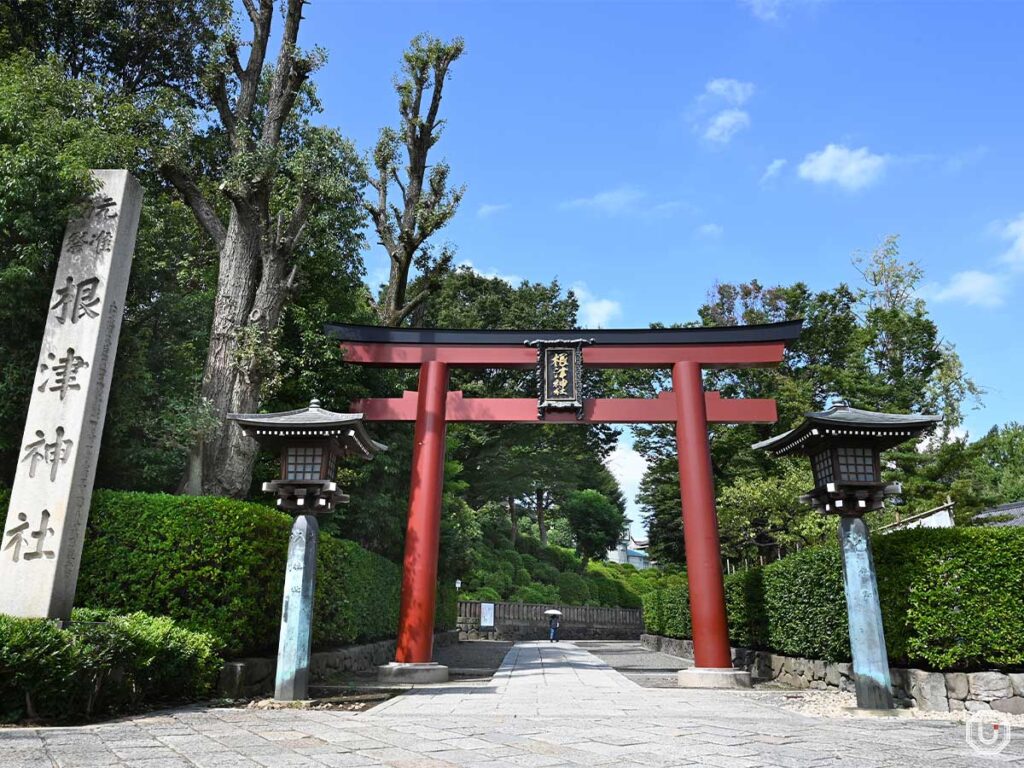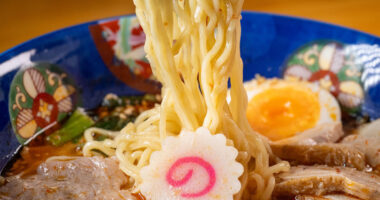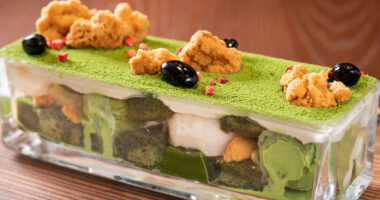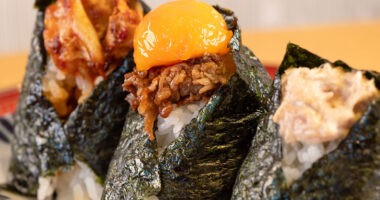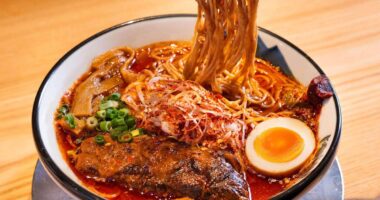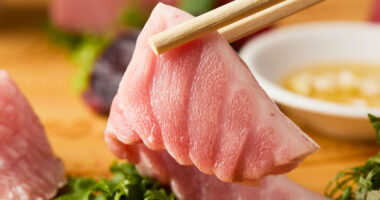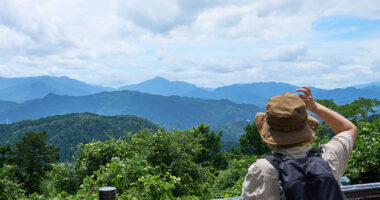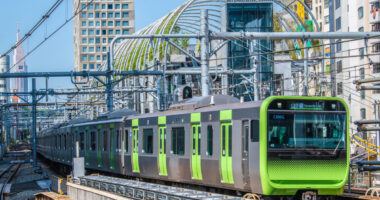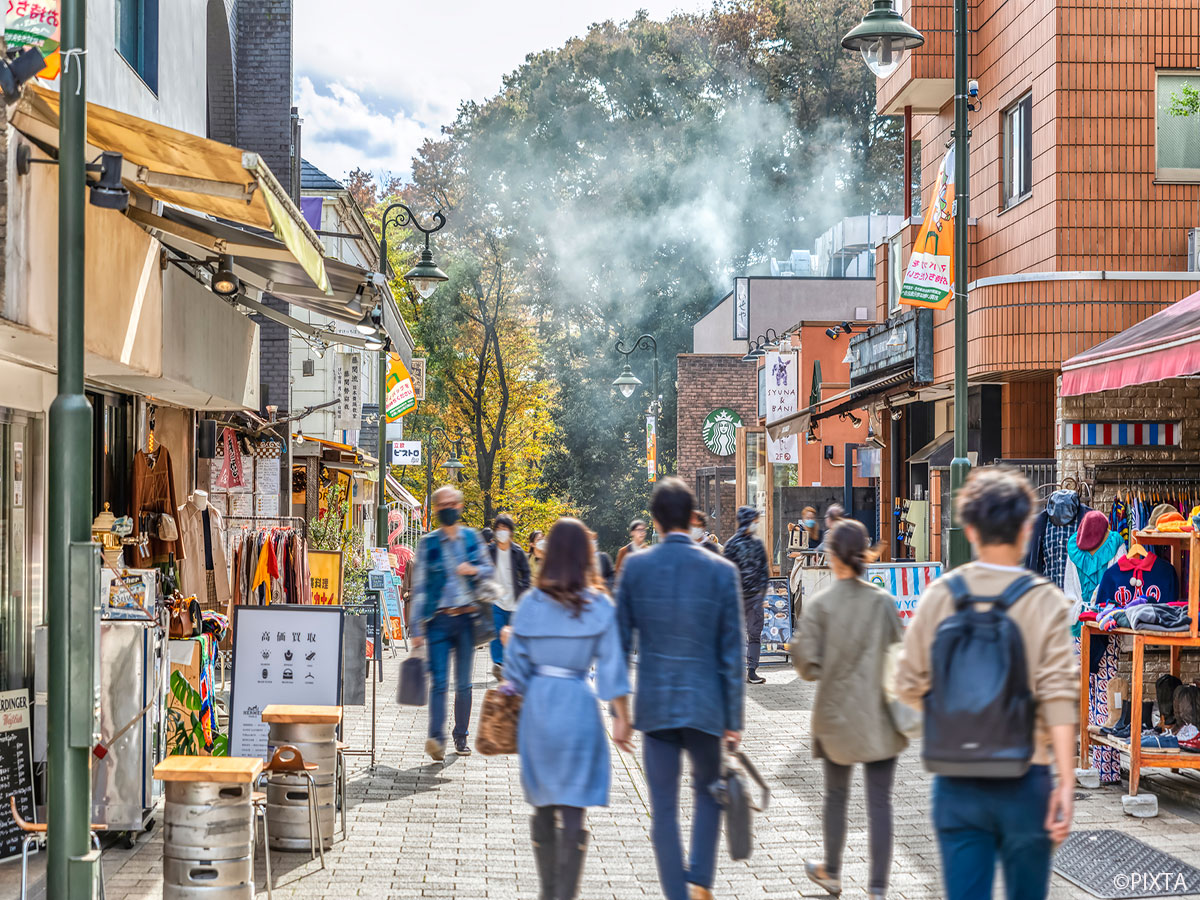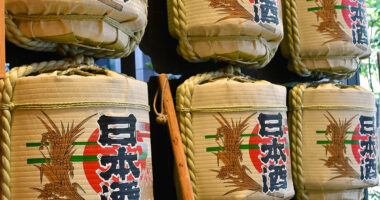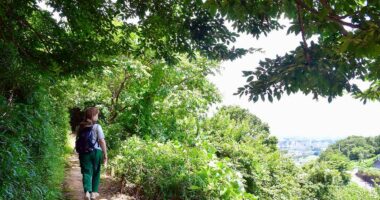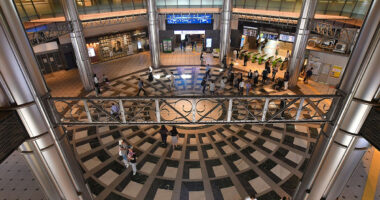When you visit Nezu Jinja Shrine, lush, towering trees create an atmosphere that makes it hard to believe you’re in the middle of Tokyo. This calm, serene space feels like time itself moves slower here, offering visitors a moment of peace and relaxation.
Magnificent Edo-era architecture
As you pass through the torii gate on the main approach leading into the shrine, the first thing you’ll notice is the imposing two-story tower gate, known as a rōmon in Japanese. This tower gate is one of seven National Important Cultural Properties found within the shrine grounds.
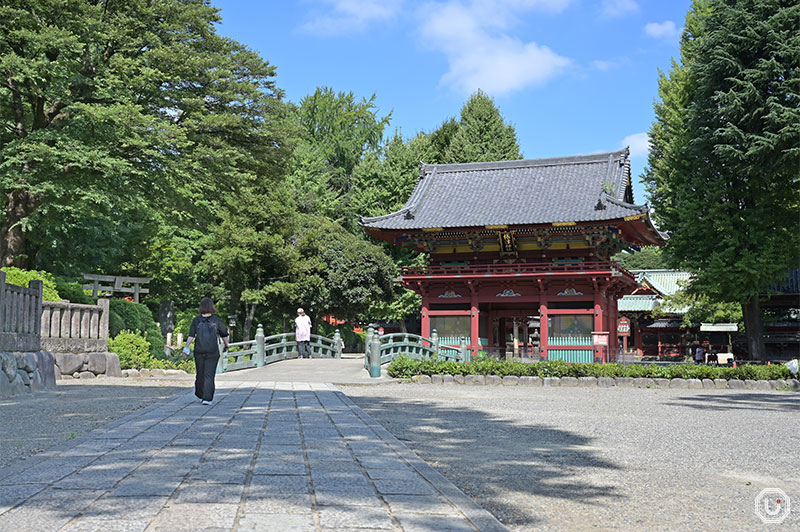
The romon of Nezu Jinja Shrine
The history of Nezu Jinja Shrine dates back over 1,900 years. At that time, the shrine was located in a different area than it is now.
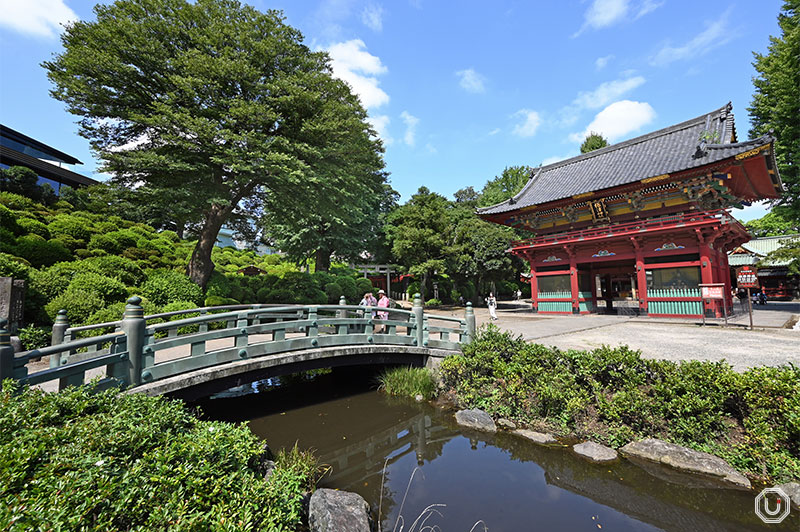
The current location of Nezu Jinja Shrine was once the lower residence of Tokugawa Ienobu, the 6th shogun of the Edo period. The land was donated by the 5th shogun, Tokugawa Tsunayoshi, and in 1706, Nezu Jinja Shrine was moved to its present location. The romon and other important cultural buildings were constructed around this time.
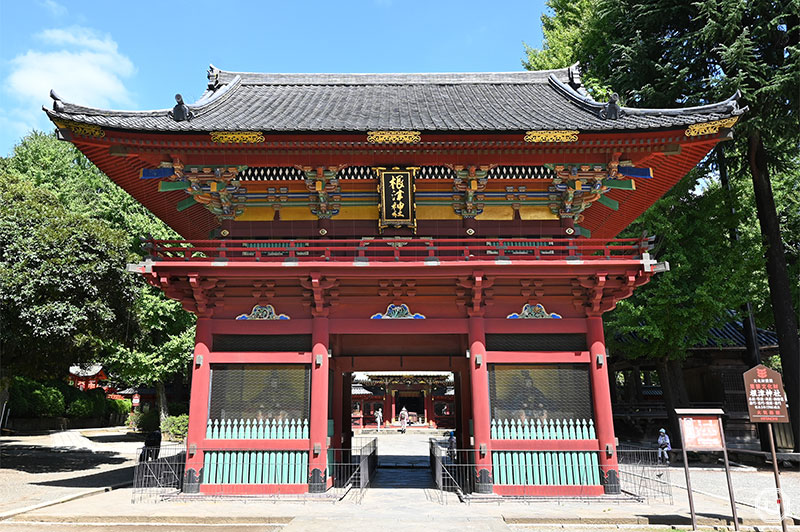
In front of you when you pass through the romon, you will see a karamon (a type of traditional Japanese gate characterized by undulating bargeboards) and its surrounding fence.
Before paying your respects at the worship hall, purify your hands and mouth at the nearby purification water basin, known as temizuya or chōzuya (literally “hand water station”) to the left of the karamon. First, scoop water with your left hand, then your right, and finally cleanse your mouth.
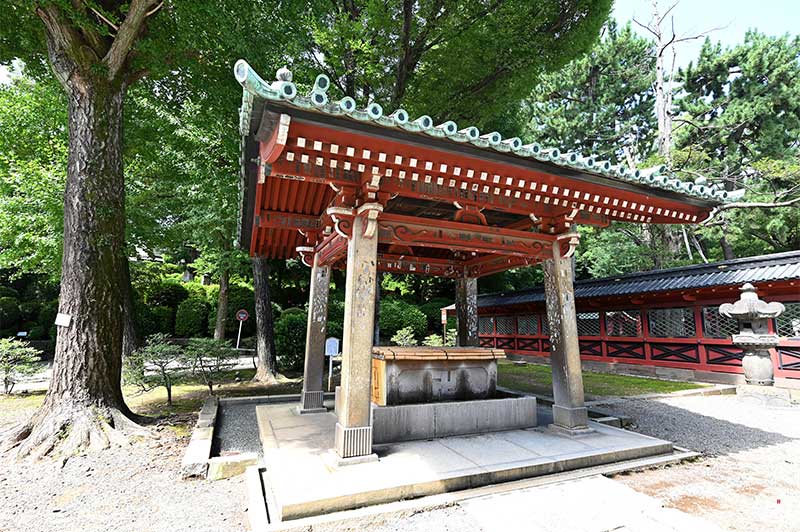
Temizuya
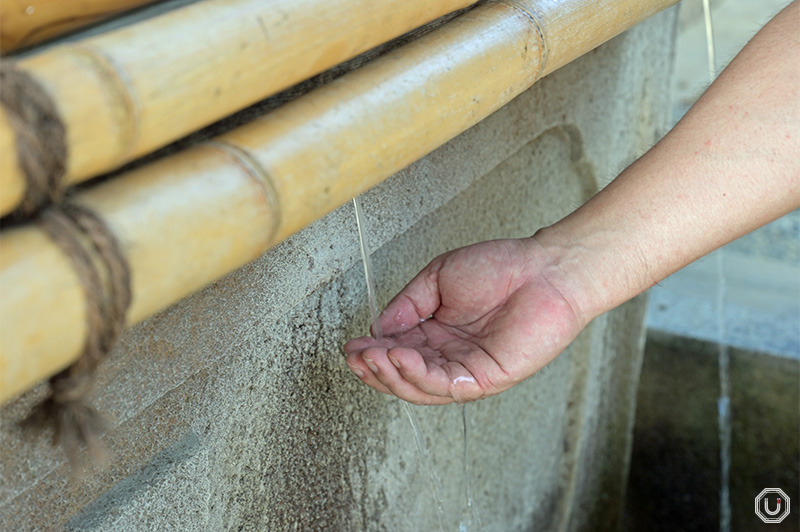
After that, proceed through the karamon gate to the area surrounded by a fence, where the haiden (offering hall) and honden (main worship hall) stand. These are also designated Important Cultural Properties, and the fenced area is considered sacred ground.
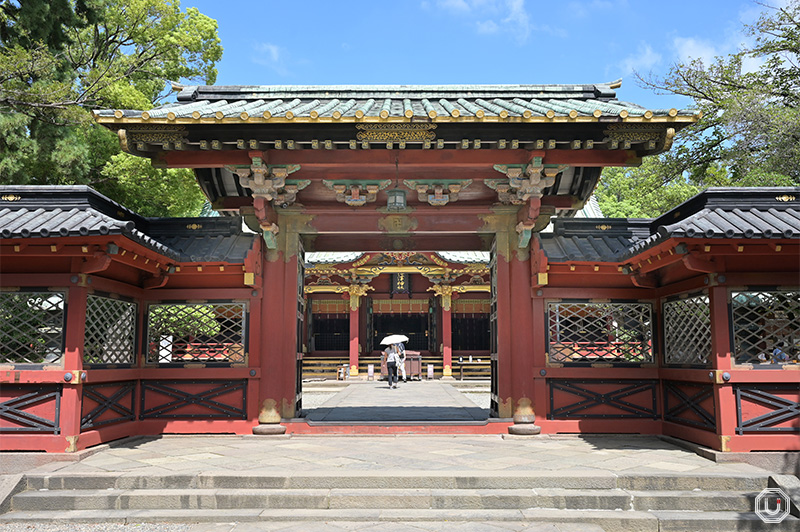
(Foreground) karamon gate, (background) haiden
Five deities are enshrined at Nezu Jinja Shrine. It is said that worshipping here can bring blessings for family safety, recovery from illness, good harvests, safe childbirth, academic success, good relationships, and prosperity in business.
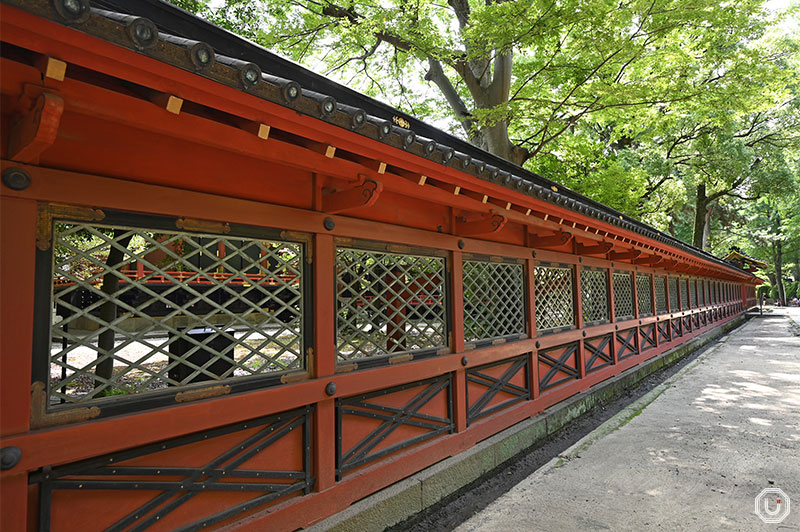
When offering prayers, first place your offering in the offering box in front of the haiden as a sign of gratitude to the deities. Then, follow the custom of two bows, two claps, and one bow. To perform this, bow deeply twice, clap your hands twice (slightly offsetting your palms to make a louder sound), and finish with one more bow.
Walk through the torii path to Otome Inari Shrine
After praying, return to the area near the romon. There, the red torii gates leading up the hill are sure to catch your eye.
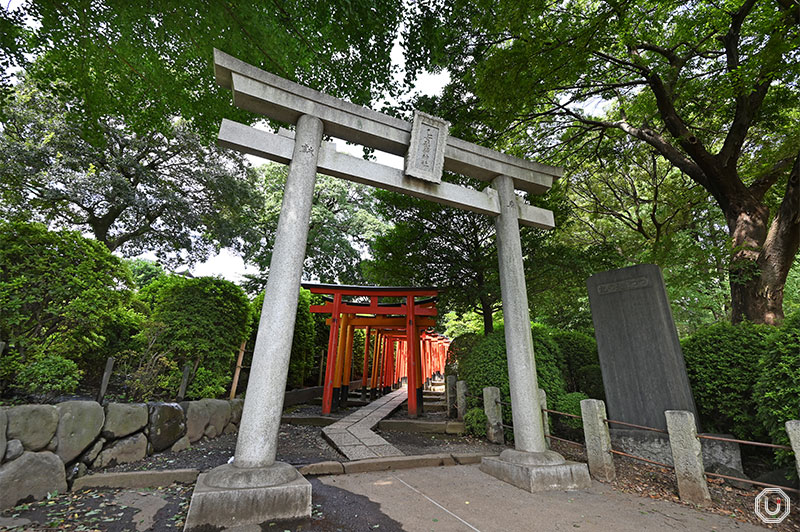
Entrance to the torii path
On the hill lies the Tsutsuji-en (Azalea Garden), where around 100 species of 3,000 azalea bushes bloom vibrantly in spring. Azaleas have become a symbol of Nezu Jinja Shrine. It’s a great time to visit every April when the shrine holds the Bunkyo Azalea Festival, named after the ward where the shrine is situated.
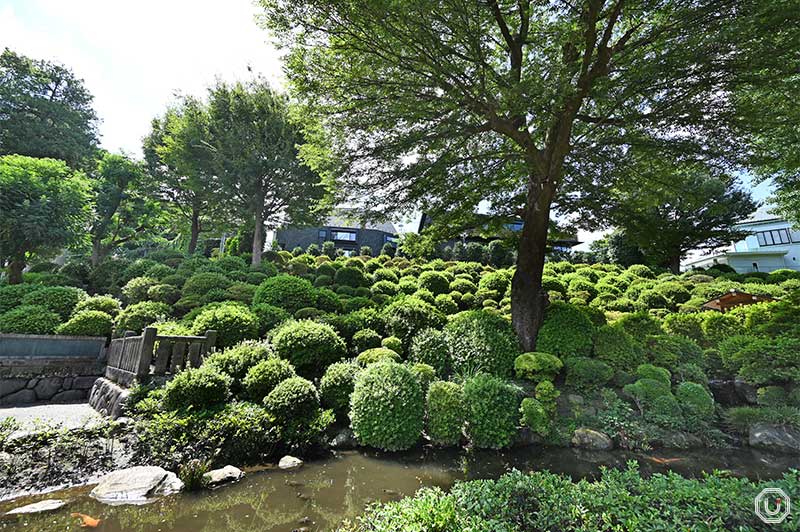
Tsutsuji-en (photo taken in September)
The red torii gates, surrounded by azaleas, are made of wood. Taller visitors may need to duck slightly to pass through them.
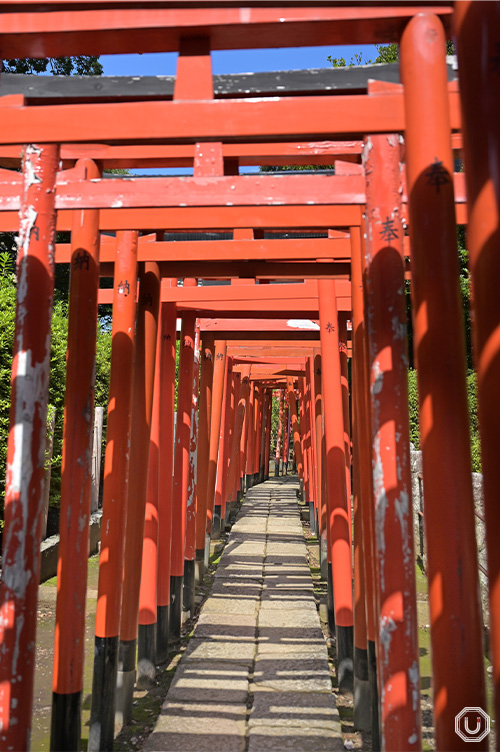
At the end of the path, lined with over 150 torii gates, you’ll arrive at the Otome Inari Shrine. Inside this small shrine, the Inari deity is enshrined.
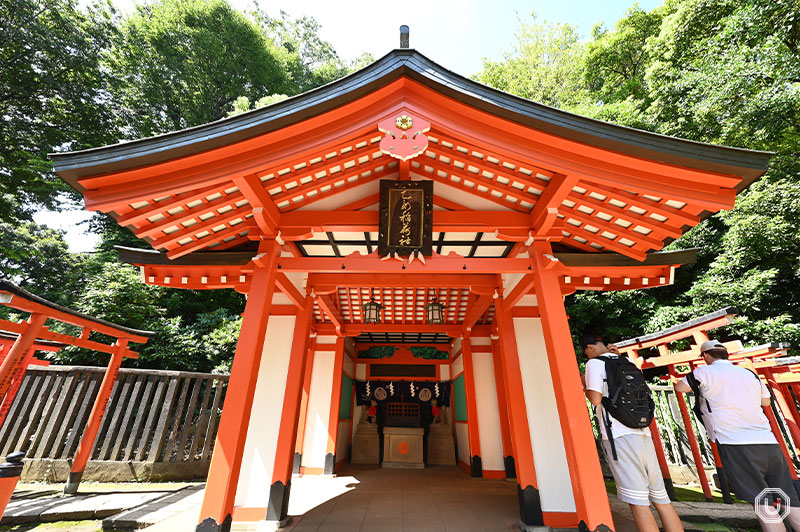
Otome Inari Shrine
Originally called Ana Inari, it eventually came to be known as Otome Inari Shrine. The reason for the name change is unclear, but perhaps the atmosphere of the torii path inspired visitors to imagine the prayers of a maiden (otome in Japanese) would be granted.
In front of Otome Inari Shrine is a small stage-like area.
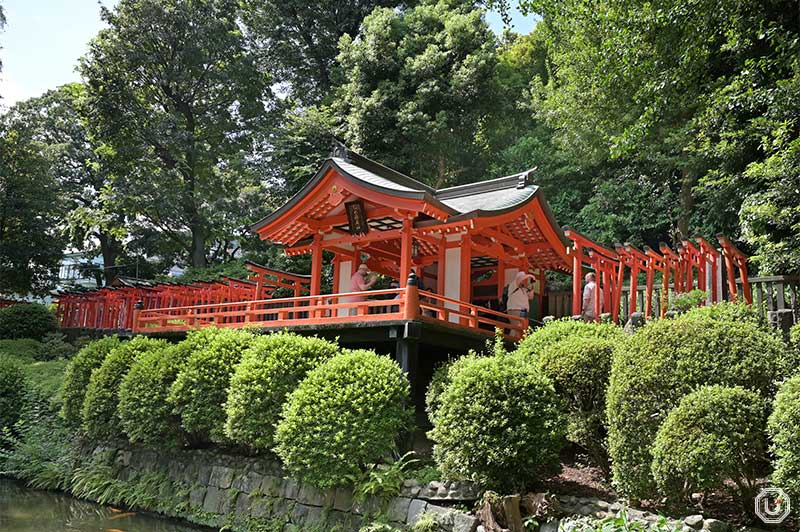
Below this stage is a pond where large koi fish and turtles swim leisurely. The tranquil atmosphere is so relaxing that you may even spot turtles basking in the sun.
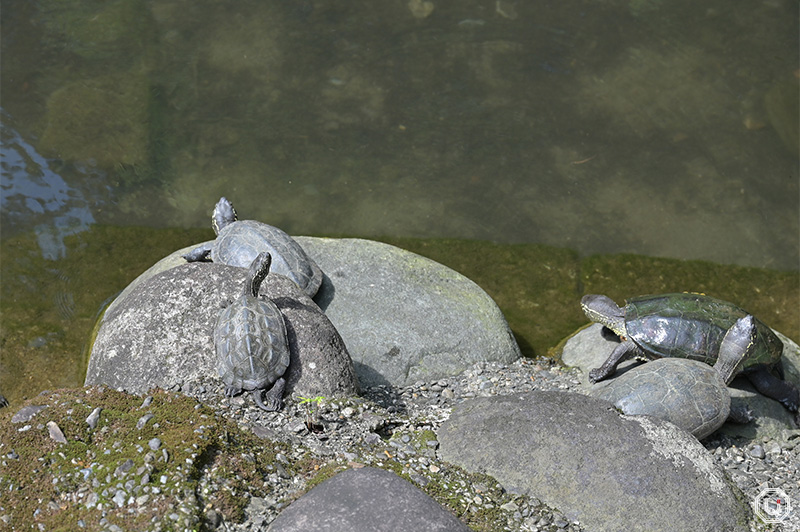
From Otome Inari Shrine, you can see the shrine buildings enclosed by the fence that you visited earlier. With the surrounding trees’ green leaves swaying gently, it’s the perfect spot to calm your mind. You might forget you’re in the middle of the city and find yourself feeling at peace. However, be cautious not to lean too far over the railing, or you might fall into the pond!

View from Otome Inari Shrine
Just past Otome Inari Shrine is Komagome Inari Shrine. Before Nezu Jinja Shrine was moved to its current location, Komagome Inari Shrine was enshrined as the guardian deity of the Tokugawa family estate.
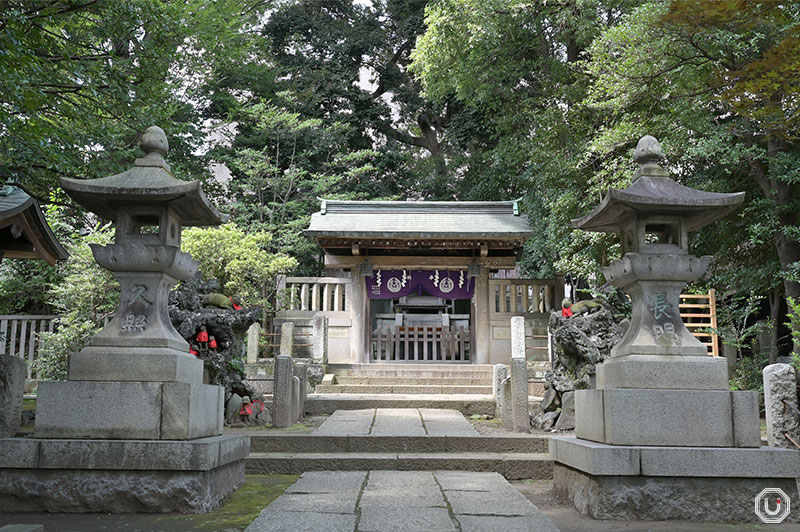
Komagome Inari Shrine
In front of Komagome Inari Shrine, you’ll find the Kazaguruma Hōnō-dai, a kind of pinwheel offering stand. This stand is related to the fact that Komagome Inari’s enshrined deity is the god of wind.
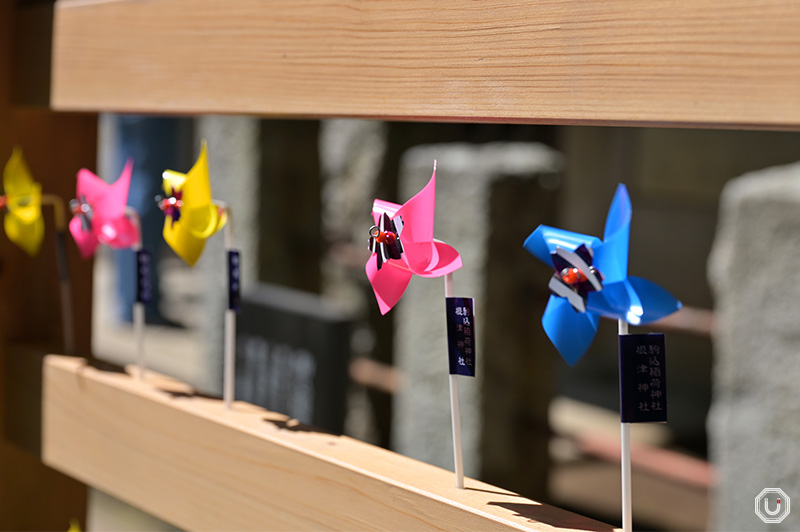
Kazaguruma Hono-dai
At the shrine office adjacent to the main worship hall, you can receive a pinwheel. Blow on the pinwheel three times, each time for a different purpose: once to purify, once to bring new energy, and once while making a wish.
Afterward, you can place the pinwheel at the offering stand or take it home. Once you’ve made your offering, you can pray to Komagome Inari Shrine following the same ritual: two bows, two claps, and one bow.
A variety of protective charms and multilingual fortune slips
After visiting Komagome Inari Shrine, you’ll find yourself beside the fence surrounding the main shrine. This fence, called sukibei, is made from thinly cut wooden pieces arranged in a diamond pattern, allowing you to see through to the shrine buildings.
The 200-meter-long sukibei fence has stood for 300 years without warping. If you have extra time, try viewing the shrine buildings from different angles. Peeking through the fence or viewing them up close provides a unique perspective and charm.
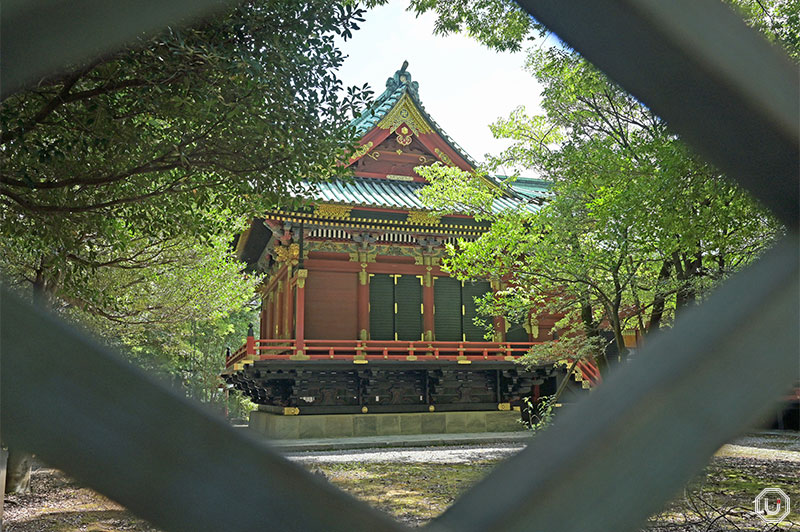
The shrine buildings seen through the sukibei fence
Within the shrine grounds, you’ll find signs explaining the architecture in both Japanese and English. This makes it easy to navigate and enjoy all the sights without getting lost in the expansive grounds.
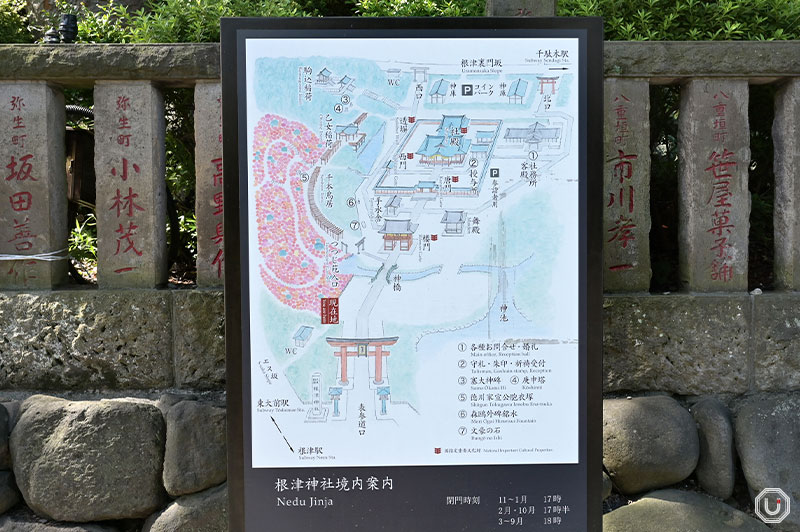
Signs available in Japanese and English
The shrine office offers a wide variety of omamori (amulets available at Japanese shrines and temples and granting good luck or protection) and ema (wooden votive plaques on which visitors write their wishes), as well as goshuin (a special seal obtained as proof of pilgrimage).
One popular omamori is the kaze-mamori, modeled after the wind deity of Komagome Inari Shrine. With a cool design that allows you to see through parts of it, it makes for a refreshing keepsake.
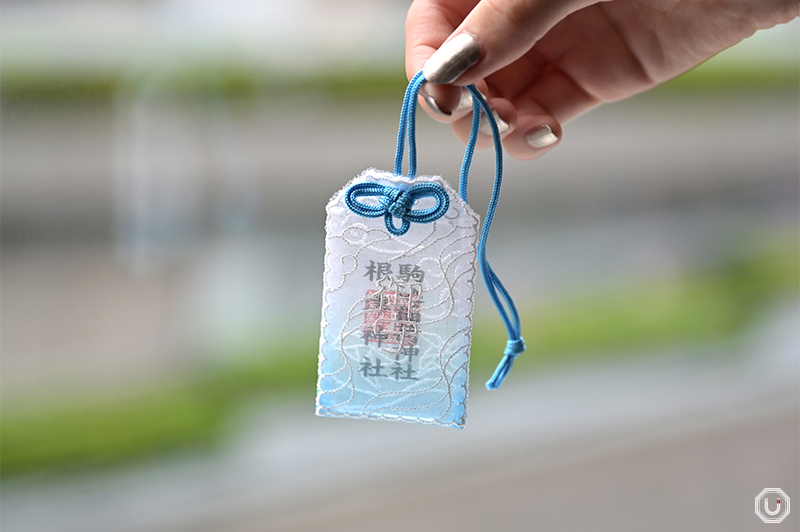
“風守,” kaze-mamori 1,000 JPY
The Senbon Torii-mamori omamori, inspired by the row of red torii gates leading to Otome Inari Shrine, is another popular item, especially among international visitors. Its three-dimensional torii design makes it a unique souvenir and a reminder of your visit to the shrine.
Another sought-after item is the Tsukinami-hana-mifuda, a monthly charm depicting seasonal flowers. These charms are said to bless your household when placed in your home like decorative flowers.
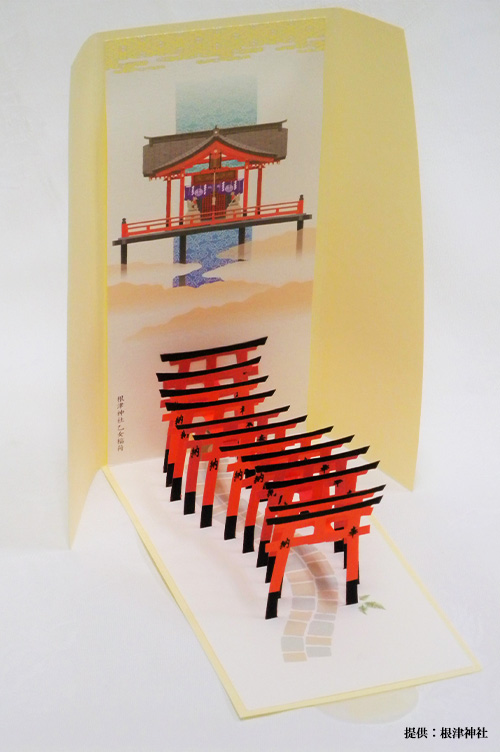
“千本鳥居守,” Senbon Torii-mamori 2,000 JPY
Nezu Jinja Shrine offers more than just charms; it also has a wide selection of omikuji (fortune slips available at Japanese shrines or temples). In addition to the vibrant Hana no Tsutsu-mikuji and Tsutsuji-mikuji, the shrine provides omikuji in four languages: Japanese, English, Korean, and both simplified and traditional Chinese.
This level of consideration for international visitors is one of the reasons Nezu Jinja Shrine is beloved not only by local worshippers but by tourists from abroad as well.
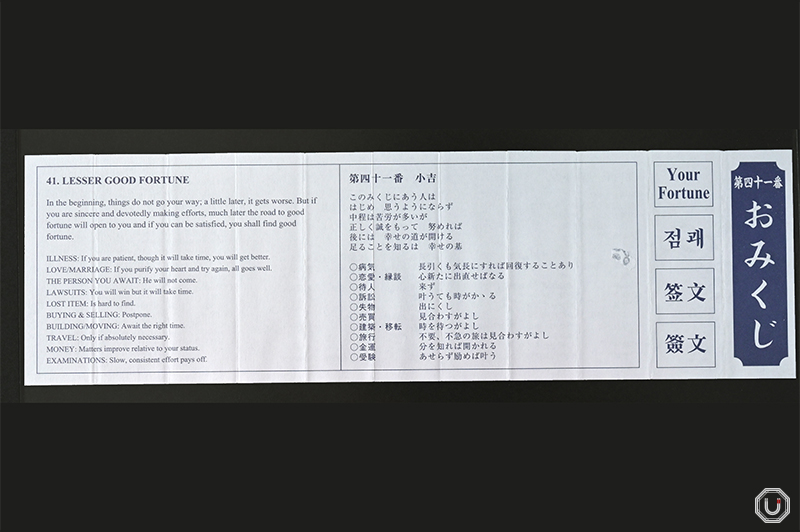
“4か国語おみくじ,” Quadrilingual omikuji 100 JPY
As azaleas are a symbol of Nezu Jinja Shrine, they feature prominently in the design of the shrine’s goshuin seals and ema plaques. In autumn, limited-edition goshuin designs featuring maple leaves and ginkgo trees are also available. You’ll be happy to put them in your goshuinchō (seal book), available at Nezu Jinja Shrine as well. The ability to enjoy different seasonal offerings is one of the many charms of Nezu Jinja Shrine.
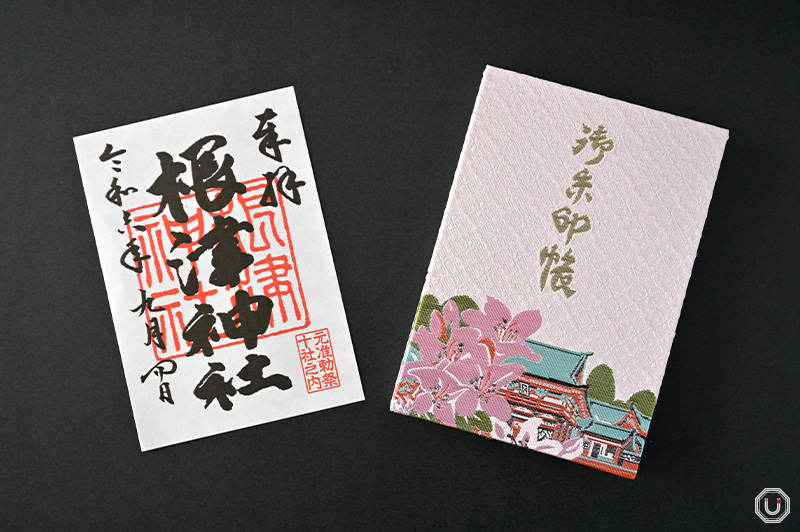
(Left) Goshuin 500 JPY, (Right) Goshuincho 2,000 JPY
Take your time to appreciate the history and nature at Nezu Jinja Shrine, a quiet retreat away from the bustling city.
Shrine Information
| Name | 根津神社 Nezu Jinja |
|---|---|
| Address | 1-28-9 Nezu, Bunkyō-ku, Tokyo
|
| Access |
Nezu Station 7-minute walk from Exit 1
|
| Phone number | 03-3822-0753 |
| Visiting Hours |
|
| Sacred Items |
|
| Goshuin |
|
| Omikuji |
|
| Admission fee | Free |
| Official website | https://nedujinja.or.jp/ |
| Other information |
|
※The information in this article is current as of October 2024.
